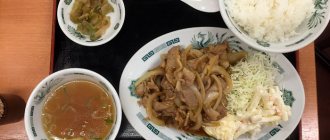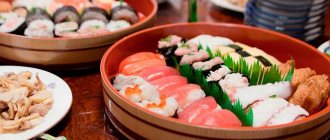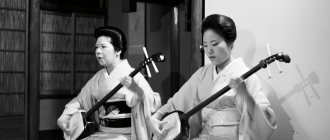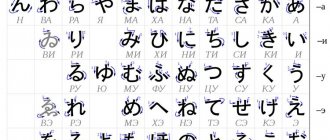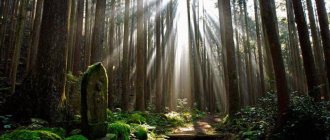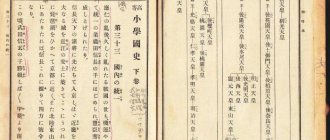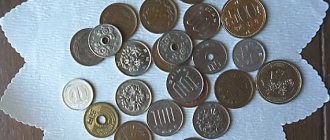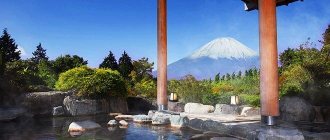Tokyo has long been recognized as the culinary capital of the world. Here you can find cuisines from all over the world and the finest restaurants. Asians are known for their special love for food, but the Japanese also pay attention to its external component. And this applies not only to the aesthetic design of dishes. The atmosphere in which you eat your food is also of great importance. Tokyo residents are some of the most sophisticated in this regard, which is why there are so many unusual cafes and restaurants here. We have prepared information for you on some of them and really hope that it will help you organize an unforgettable dinner or lunch in this amazing city.
Cafe where you can take a foot bath
The Hougurest massage spa offers an unusual type of relaxation - Footbathcafe - a café with foot baths. In fact, this is one of the health procedures of the complex. You can take a foot bath, which has a beneficial effect on blood circulation and helps the body recover, while enjoying a drink. This cafe is perfect on a hot day, after an active walking tour of the city. Moreover, it is located not far from Ueno Park.
You can reserve your spot through the website (in Japanese).
Foot bath: 30 minutes – ¥200
Drinks (non-alcoholic) from 200¥
60 minute bath plus a drink of your choice – ¥800
Name in Japanese:ほぐれすと (Hogure suto)
Address in Japanese: 東京都台東区台東4-8-5T&T御徒町ビル3F
Address in Latin: Tokyo, Taitō, Taito, 4 Chome−8−5 T&T (3rd floor)
How to get there: two minutes walk from Okachimachi Station (御徒町駅)
Opening hours: 10:30~21:30
Phone: 03-6803-2971
Website in Japanese: https://hogurest.com/cafe.html
Yotaro Honten (与太呂本店)
Founded in 1921, Yotaro Honten is a true Osaka treasure. This is a tempura restaurant awarded two Michelin stars. Yotaro Honten is famous for being the founder of Kansai-style tempura, which is different from what is served in Tokyo. While tempura in Tokyo is cooked primarily with sesame oil, Yotaro Honten used cottonseed oil to achieve more fluffiness and thinned the batter to bring out the natural flavors of the ingredients.
Only fresh ingredients are used to prepare the dishes (no frozen or processed foods).
And after enjoying the delicious tempura, try another special dish from Yotaro - Taimeshi (snapper rice). Steamed rice is infused with the most delicate taste and aroma of snapper. The dish is quite large, so if you don't finish it right away, feel free to ask to pack what's left so you can finish it at home.
The restaurant has a spacious Taisho period-style dining room, and if you want to watch the cooking process, choose seats at the counter.
How to get there: 2 minutes walk from Kitahama Station Exit 6 (Midosuji Line).
Opening hours: 11:30–14:00 (lunch)/17:00–21:00 (dinner).
The restaurant is closed on Sundays, holidays, and the 2nd and 4th Thursday of the month.
Budget: 8,000–10,000 yen.
Cuisine: tempura.
Nearby attractions: Osaka Castle.
Cafe-planetarium
At Haneda Airport, passengers can have fun at the planetarium cafe while waiting for their flight. It is decorated according to the theme and has a hall equipped like a planetarium, in which programs are broadcast. This cafe will be interesting not only for children, but also for lovers of romance.
Shows in the planetarium run from 11:02 to 22:20 and last from 2 to 20 minutes. The schedule can be checked on the website or in the cafe itself.
Customers love the cuisine at this cafe. The presentations are mostly in Japanese, but that doesn't hurt. The cafe has many good reviews.
Prices:
Entrance to the planetarium is paid separately. Adults: ¥520, children (2 to 12 years): ¥310
Drink+dessert 850¥
Drink+hotdog+popcorn 1050¥
Pasta+salad+drink from 1250¥~
Contact Information:
Name: PLANETARIUM Starry Cafe
Address in Japanese:
Address in Latin: Tōkyō-to, Ōta-ku, Hanedakūkō
How to get there: Haneda Airport, international flight terminal, “TOKYO POP TOWN” shopping complex, 5th floor. “COOL ZONE” section.
Opening hours: 7:30~23:00
Phone: 03-6428-0694
Website in Japanese: https://www.haneda-airport.jp/inter/premises/tenant/5200100050750000/
Gundam Cafe
This cafe will delight all fans of the anime “Mobile Warrior Gundam”. The cafe is decorated in anime style. The site is only partially duplicated in English, but we advise you to look at the cafe menu not only to get an idea of the prices. All dishes and drinks have an interesting design. You can not only eat there, but also buy anime-themed souvenirs.
There are two such cafes in Tokyo - in the Odaiba and Akihabara areas.
Contact Information:
Name: GUNDAM Cafe
Cafe in Odaiba:
Address in Japanese:東京都江東区青海1-1-10 ダイバーシティ東京プラザ2F
Address in Latin: 1-1-10, DiverCity Tokyo Plaza 2F, Aomi, Koutou-ku, Tokyo
How to get there: 3 minutes walk from Tokyo Teleport Station, DiverCity Tokyo Plaza, 2nd floor.
Phone: 03-6457-2778
Opening hours:10:00-21:00
Cafes in the Akihabara area:
Address in Japanese:東京都千代田区神田花岡町1−1
Address in Latin: Tōkyō-to, Chiyoda-ku, Kanda Hanaokachō, 1−1
How to get there: One minute walk from Akihabara Station (JR Line). The exit from the station is Denkigai-guchi.
Opening hours:10:00 – 22:00
Website in Japanese and English: https://g-cafe.jp/
Kitamura (北むら)
Kitamura Restaurant opened in 1881 in the heart of Osaka and has been serving authentic Kansai-style sukiyaki for over 100 years. The restaurant has been awarded one Michelin star.
The main difference between Kansai-style sukiyaki and Tokyo ones is that they do not come with soup. The seasoning itself is much simpler - just soy sauce, sugar, mirin (sweet sake) to enhance the natural flavor of the ingredients. Also, before eating, the ingredients are dipped into a raw egg. Today, most sukiyaki restaurants in Japan serve dishes with raw egg, and this comes from Kitamura's restaurant in Osaka.
The restaurant serves premium Wagyu beef, cut into thick slices specifically for easy grilling on an iron pan for making sukiyaki.
We also recommend trying wagyu in shabu-shabu with ponzu sauce (citrus soy sauce) or simply frying pieces of meat on a baking sheet with batter and vegetables.
The restaurant's interior is Japanese-style, with tatami-lined rooms and a courtyard garden, guided by a large willow tree at the entrance.
How to get there: 6 minutes walk from Shinsaibashi Station Exit 6 (Midosuji Line).
Opening hours: 16:00–22:00 (Monday – Saturday).
The restaurant is closed on Sundays and holidays.
Budget: 10,000–15,000 yen.
Cuisine: sukiyaki.
Nearby Attractions: Shinsaibashi.
Cafe with ninjas
Even if you're not into ninja stories, you'll be impressed by this restaurant. And if you have always dreamed of touching the secrets of this secret clan, then a bright evening is guaranteed to you. Children will especially like the restaurant. The atmosphere, the serving of food, the interior design - everything is done in the theme of the world famous spy warriors. Before you get to the ninja-themed room, you will need to complete a quest. The restaurant has magicians who can entertain you with their performances during lunch, plus the presentation of the dishes is very elegant and unusual. The restaurant has a system of “courses” - a set of dishes from 6 items, united by theme. There is a vegetarian menu.
The restaurant is a frequent party spot, so the owners ask that guests with children plan to visit before 7 p.m.
Most visitors are delighted with the visit and claim that it is worth the money spent. Although in the reviews there are also cases when a proper reception was not provided and visitors did not like not only the dishes, but also the service, which is a rare case for Japan.
Prices:
Hot dishes from 1200¥~
"Course" from 6000¥~
Sushi, rolls from ¥600~
For companies from 8 to 25 people there is a special offer for ¥8,888 - a set of dishes (which may vary depending on the season) plus the possibility of unlimited ordering of drinks (alcoholic and non-alcoholic) for 2 hours. In this case, you spend no more than 2.5 hours in the restaurant. If you want the range to include wine, you need to pay an additional ¥1000.
Since the restaurant is very popular, we recommend that you make reservations in advance through the restaurant's website. If there are two days or less left before the desired date, it is better to call the restaurant in person. We recommend visiting the restaurant's website - most of the information is translated into English, this will help you get an idea of the menu.
There is a promotional video for the restaurant on YouTube - it will be interesting to watch, even if you are not going to Tokyo anytime soon.
Title: Ninja Akasaka
Address in Japanese: 東京都千代田区永田町 2-14-3 赤坂東急プラザ1F
Address in Latin: Tōkyō-to, Chiyoda-ku, Nagatachō, 2 −14−3 Tokyu Plaza Akasaka1F
How to get there: From Akasaka-mitsuke Station (Tokyo Metro Ginza Line or Tokyo Metro Marunouchi Line), walk three minutes to the Tokyu Plaza Akasaka shopping center. The restaurant is located on the ground floor.
Opening hours:
Monday to Saturday: 17:00-25:00(Restaurant closes at 22:30)
Sunday and public holidays:17:00-23:30(Restaurant closes at 21:45)
Phone:03-5157-3936
Website in Japanese and English: https://www.ninjaakasaka.com/
Three of Tokyo's best Japanese fine dining restaurants
Tokyo cuisine, born during the Edo period, is a more brutal product.
Let's continue. Now there are no sushi places, but “real” restaurants. With the first, second and third. That is, not fast food, albeit expensive (20 sushi in 27 minutes and $350), but a two-three-hour experience (for the same $350) in the omakase style.
“Omakase” translated means something like “I trust you.” Well, that is, the client trusts the cook, and he, filled with responsibility, does his job. If we explain it in the usual categories, then “omakase” is a tasting menu, or even more simply, a set lunch. Kyoto haute cuisine kaiseki is always served in the form of sets, complexly, that is, in the omakase style. Tokyo omakase is similar to Kyoto, but of course there are differences. Firstly, the dishes of Tokyo chefs, frankly speaking, are not so refined. Purely aesthetic. Because Kyoto cuisine, especially kaiseki, was born of Buddhist contemplation. And, just like in the rock garden, on every plate served during a Kyoto dinner there must be perfection, there must be a mystery, there must be an unattainable ideal. Zen, in general.
And Tokyo cuisine, born in the Edo period, about three centuries later, is a more brutal product. This is the cuisine of the samurai, the military aristocracy. That’s why it’s more satisfying, but simpler. Simpler, at least externally. No fresh bamboo shoots hiding—in ice—small snacks that look like jewelry. No! In Tokyo - hearty soups, rice with eel; yes, elegantly cooked and served, on amazing dishes, but without the Kyoto sophistication.
Like Michelin-starred sushi places, "regular" Tokyo fine dining restaurants are decorated with two or three stars, are expensive and seat 10-12 people, much like sushi bars with seating at a counter in front of the chef.
1. Kagurazaka Ishikawa
Three Michelin stars, booking months in advance, nothing unusual! Chef-owner Hideki Ishikawa's cooking is a subtle interpretation of classic Edo period cuisine.
In addition to dessert, the dinner included eight dishes: crab and Kyoto eggplant with crab broth jelly, deep-fried fish and lotus root, turtle soup with vegetable julienne, sashimi (sea crucian and steamed abalone), grilled sea eel, blanched freshwater eel with pumpkin, hot pot with local duck and tofu and finally crispy fish rice and miso soup.
To leave, I received leftover rice wrapped in a banana leaf, and the three-star chef came outside to see me off and waved until I disappeared around the corner.
When I say "subtle" about Chef Ishikawa's interpretation of brutalist Edo cuisine, I mean subtlety in the details. It's like sashimi. By the way, the chef cut them himself, with a huge half-meter knife. It seems like what can you come up with here? Cut the right fish in the right way and serve. No! The steamed abalone (abalone) was served with a jelly made from abalone broth. And this jelly made the whole dinner! Almost unseasoned, the most delicate substance naturally melted in the mouth. It melted, leaving a barely noticeable aroma of the sea. Or two types of eel served in a row - brutal, oily and thin, almost lean. In general, after acne I usually have an unhealthy feeling; after all, this is a very fatty fish, and there were no bad consequences from any of them. Or turtle soup!
As befits Edo style cuisine, the chef did without red meat. The only standard meat was duck.
The dinner cost about $260 and lasted about two hours.
2. Narisawa
Yoshihiro Narisawa is one of the most famous chefs outside of Japan. Perhaps the most famous. It ranks eighth in the S. Pellegrino World's 50 Best Restaurants list, and second in the Asian list. It has two stars in the Michelin guide.
His cuisine has been called either “French using Japanese ingredients” or “Japanese using French cooking techniques.” To me, everything that chef Narisawa does seems completely Japanese, except that the serving of beef tartare with beluga caviar for an appetizer, the seating at tables (and not at the bar counter) and the overly intrusive service indicate that the owner of Narisawa is a man who has spent many years in Europe.
Neither the “Edo era” nor the “Kyoto kaiseki” are fully suitable to define the style of Narisawa’s cuisine. For Edo it is too elegant and beautiful, for kaiseki it is too complicated. The chef himself calls his cuisine “Satoyama cuisine,” and “Satoyama” is a Japanese term denoting the border area between mountains or hills and arable flat lands, that is, rice terraces, meadows used for grazing, forests, and vegetable gardens fall into Satoyama. Obviously, Narisawa, calling his style “Satoyama cuisine,” means that it is not industrially grown vegetables and grains that are used in cooking, but products from centuries of hand-cultivated difficult lands, plus forest mushrooms and berries, meadow herbs, and game. And fish, of course. Satoyama may well move not into arable land, but into the seashore.
Naturally, Narisawa Satoyama's cuisine includes different types of meat. What would it be like without him? And beef from Kobe, and pig from Chibe, and duck from Kobe. And a snake. However, I don’t know what category to classify her into. The snake is a sea snake, that is, it looks like a seafood product. An excellent soup was made from a snake from the waters that wash Okinawa (brought to my table in dried form as a deterrent).
The strangest and funniest dish of the day was prepared right at my table. First, surrounded by herbs and satoyama flowers, a container was brought in, from which a brown substance tried to escape. The substance turned out to be dough made from exactly those flowers and herbs that were brought to the table.
Then a certain unit appeared on the table, in which the dough very quickly turned into... bread. It's true - what else could the dough turn into?
For a three-hour satoyama experience (with wine served by the glass with various dishes) and 14 breaks, I paid $360.
3. Ginza Kojyu
Probably the best restaurant in Tokyo. Although “only” with two stars. And only eight seats at the counter. My friend and guide in the world of Japanese cuisine, recognized expert and excellent chef David Kinch, generally considers this restaurant the best in the world.
Either way, I definitely ate the best meal of my entire trip to Tokyo here. It was deep-fried conger eel with daikon puree, okra and eggplant in a bonito tuna and seaweed broth mixed with boiled sake and soy sauce. It may not sound like much, but the taste and aroma of this dish are such that half your life will be given away easily. By the way, using the example of this seemingly simple dish, one can explain why and why the Japanese, in addition to sour, sweet, salty and bitter, distinguish a fifth taste, umami. Umami is the taste of fermentation, that is, roughly speaking, rotting. In order to achieve umami, meat is aged, game is kept warm, cabbage is fermented, milk is fermented, etc. Or monosodium glutamate is added during cooking, which is concentrated umami. In general, this is a separate conversation, but for now, believe me: deep-fried eel, mashed raw daikon, slightly cooked okra and a phenomenal sauce-broth together gave an incredible aroma and subtle taste. The devil is in the details. And the truth is in the details.
There were nine changes in total. The show lasted two and a half hours. I paid about $350 for the sake dinner.
Do you check your email often? Let there be something interesting from us.
Cafe with robots
Although this place bears the proud name of a restaurant, we must take into account that this is, first of all, an entertainment show, and food plays the very last role here. Therefore, you will need to pay for the entrance, as for the entrance to the performance - 8000¥ (if you pay by credit card through the site, the entrance will cost 7500¥). The total duration of the theatrical performance is about one and a half hours. It consists of four shows with short breaks. The performance involves robots and characters dressed in Hi-tech style. Please note that all this is accompanied by bright lighting effects and loud music. There you can also buy a set for ¥1000 or ¥1500 (bento or sushi set with a drink).
We advise you to reserve your ticket in advance on the website (you can also pay for it there). Website in English. About an hour before the performance, you will need to go to the restaurant and exchange your reservation for a ticket. Half an hour before the start of the performance, tickets not purchased under reserve will be canceled. You can try your luck, come an hour before the show and try to buy a ticket without a reserve.
If you are just nearby, it will be interesting to look at the design of the entrance to the restaurant: there are large robots with which you can take a photo.
Visitors to the show leave rave reviews, writing that they really liked the show. But there are those for whom it was too loud and the general state of the sets and costumes left a shabby impression. But everyone agrees that the participants in the show themselves give it their all. And no one writes much about food - it is clearly not the purpose of visiting this establishment.
It's better to see once, so don't deny yourself the pleasure of watching a YouTube video about this restaurant, for example this:
Name: Robot Restaurant
Address in Japanese: B2F
Address in Latin: Tōkyō-to, Shinjuku-ku, Kabukichō, 1 −7−1 Shinjuku Robottobiru B2F
How to get there: You will definitely need a map here. The restaurant is located in a very popular area of Tokyo - Kabukicho. The area itself is not difficult to find - it is located next to Shinjuku Station, but it is extremely difficult to navigate there. There are many different types of establishments in this area and it is always very crowded. Therefore, we advise you to arm yourself in advance with a map with a building marked on it, or have access to the Internet.
Opening hours:
The performance schedule may change, so please check the website for details.
There are three performances on weekdays:
opening 17:15 (starts 17:55)
opening 19:10 (starts 19:50)
opening 21:05 (starts 21:45)
On weekends, another matinee is added. Opening 15:20 (start 16:00)
Phone: 03-3200-5500
Website: shinjuku-robot.com
World cuisines – restaurants in Japan
High-end restaurants in Japan are called ryotei. Externally, they look like a traditional Japanese residential building. The cuisine here is always seasonal. There is a certain dining etiquette in establishments, so it is better to go to such a place for the first time accompanied by a Japanese person.
Skiyakiya . First of all, here the dish sukiyaki is prepared in a cast iron pot on a gas burner in front of the guests. It is a sweet-tasting skiyaki, thin strips of meat with vegetables and eggs stewed in soy sauce, decorated quite elegantly. Guests, in general, can take part in the cooking process themselves.
Susiya restaurants . They eat sushi here. Usually these are small, clean cafes. High-end suscias usually don't have a menu with prices. The visitor sits down in front of the chef and first orders a few of his favorite sushi, and then completely relies on the experience and taste of the itamae chef. Such a high-class chef can sometimes even at first glance determine which fish a visitor will most like. Itamae's skill is always admirable. However, you need to be prepared for the fact that the bill in such a restaurant will be very different from ordinary sushi, where the order is served according to what is chosen on the menu.
, kaitenzushi sushi bars with affordable prices have developed . In them, plates with ready-made sushi rotate on a conveyor belt.
Tempurai . The word tempura itself, like the dish, has Portuguese roots (from the word tempero - spices, seasoning), but, in essence, the dish is typically Japanese. To prepare it, crab meat, kisu fish (Russian sillaga) and various vegetables are used. All this is wrapped in dough, fried in oil and served immediately. Typically, tempura is served with ten tsuyu sauce with stirred grated radish. One of the delicious types of this dish is considered to be tempura made from ayu fish, which is found only in the purest water. A chef who prepares ayu tempura needs quick reactions: after all, before starting to prepare the dish, he must catch a fast fish in an aquarium with his bare hands. This tempura is prepared in front of the guest, and it is considered the highest skill to give the finished product the curve of a swimming fish.
Soba-ya . In these places they eat national specialties: noodles made from buckwheat soba flour or wheat udon. Unlike many countries where making sounds while eating (slurping, slurping, etc.) is considered indecent, in Japan it is customary to eat soba or udon with a loud sound, noisily sucking the noodles into the mouth. It is believed that air drawn into the noodles helps bring out the more subtle flavors of the noodles. If you eat noodles silently in front of the Japanese, they will think that this dish is simply disgusting for you.
Tonkatsuya - the so-called “cutlet”. Here you can taste tonkatsu-breaded pork schnitzels, breaded fish, oysters and all kinds of vegetables, the name of which includes the word furai - fried.
Yakitoriya . This is the place for grilled chicken skewers with onions and hot sauce. They also offer liver, beef, vegetables and ginkgo nuts. All this is cut into small pieces and cooked over hot charcoal. These are usually small establishments marked with red lanterns above the entrance. Workers, office workers, and sellers, both men and women, go to the yakitoria at the end of the working day.
Tyuka Ryori . These are places with Chinese cuisine. The selection includes inexpensive dishes such as harumaki spring rolls, gyoza dumplings and stewed meat balls in shumai dough.
Shokudo (dining room, place where people eat). There are a variety of inexpensive rice and chicken dishes on offer.
Koryoriya (small restaurant). Here, small snacks with fish, vegetables, etc. are served with drinks. Food comes first, then drinks.
Nomiya (zucchini). Essentially, this is a bar that offers light snacks in addition to drinks.
Robatayaki is a restaurant decorated in a peasant style with rustic food.
Kissaten are cafes, often called Kohi-shoppu (coffee shops). You can have a snack here. In total, there are about 120,000 cafes in Japan, ranging from jazz cafes to cafes for housekeepers (meido cafes). Traditional Japanese cafes are called kanmi-kissa. In these places, Japanese sweets are served with green tea. This is usually a favorite meeting place for women.
Shojin ryori - vegetarian food of Buddhist monks, for those who want to dine at the monastery.
Yatai - Japanese stalls on wheels where you can buy the Japanese version of okonomiyaki pizza, tomorokoshi corn cobs, isiyakiimo sweet potatoes, Chinese ramen noodle soup, Japanese yakisoba noodles fried in a semi-sweet sauce, o-den - homemade cheese, eggs cooked in a special soup, potatoes and radishes. This dish goes very well with cold sake and shochu.
Standing eateries are called tachigui (eating while standing) or tachinomi (drinking while standing). Japanese fast food provides its customers with dishes such as gyudon (rice with boiled beef and sautéed onions), tendon (tempura rice), soba or udon.
The Japanese equivalent of the ubiquitous McDonald's is called Morinaga Love .
Many Japanese internet cafes serve tea and coffee free of charge. You can also take a shower here, and some establishments even have washing machines. They may offer you a blanket, or, say, rent a separate room without windows with a tatami or soft mattress on the floor for an additional fee.
Leonid Gelibterman: “I was born almost in the middle of the last century. During the times of delicious doctor's sausage, the treasured jar of Riga sprats in the New Year's grocery set and apple wine like Michurin's Tears. I did not understand my happiness, scooping black caviar with an aluminum spoon from a three-liter glass jar in the construction brigade, and did not pay attention to the deposits of shrimp and squid in the fish departments. I looked at the world through the eyes of Yuri Senkevich and dreamed of distant countries and cities. How everything has changed... And even Zhvanetsky’s joke “I urgently need to go to Paris on business!” It's not a joke anymore. And natural black caviar cannot be found during the day, and wine appellations are appearing in Russia. And I keep walking around the world, looking, absorbing, trying. And I share the joy of knowledge with other people.”
Travels with Leonid Gelibterman:
Japanese cuisine: rice, noodles, fish According to the Japanese writer and playwright Junichiro Tanizaki, “Japanese cuisine is not what you eat, but what you look at”... See more...
How to Drink in Japan When drinks are served, raise your glass or cup to be filled and take a sip before placing it on the table. See more...
What do they drink in Japan: sake, shochu and others ? We are going on an alcoholic and gastronomic journey through the Land of the Rising Sun with Leonid Gelibterman, so that when fate gives us a gift... See more...
Japanese alcoholic drinks: uisuki, mirin and biru We continue to taste Japanese alcoholic drinks. Move on to uisuki, mirin and bir, but don’t mix! See more...
Traveling around Ireland: meat, fish, milk Leonid Gelibterman visited the first literary and gastronomic festival in Ireland. See more...
Traveling around Ireland: beer and whiskey Leonid Gelibterman, who attended the first literary and gastronomic festival in Ireland, continues to explore Irish specialties... See more...
Traveling around Ireland: pubs and restaurants For all interested parties, I hasten to inform you that in Ireland you should not say pub, but pub. The Irish are very sociable people, but they rarely visit. See more...
Cafe with vampires
And for horror lovers, there is a restaurant in Tokyo. Vampire Café is not only furnished in a sinister style reminiscent of the legends of Count Dracula, but also has an original menu with dishes designed to match the theme. And vampires will serve you too. Many starters are priced at ¥666, but hot dishes start at ¥1200~
To enter the restaurant you need to pay ¥500 per person. The average bill is ¥3500
You can reserve a table in advance through the website (in Japanese) or call them. Or you can come and find out the availability of places in person. There may be free tables, or the staff will be able to book you in soon.
In general, visitors are very pleased with both the atmosphere and the cuisine. If you love horror and vampires, you will definitely like this cafe.
Name: VAMPIRE CAFÉ
Address in Japanese: 東京都中央区銀座6-7-6 ラペビル7F
Address in Latin: Tōkyō-to, Chūō-ku, Ginza, 6 −7-6 La Paix bil. 7F
How to get there: Exit Ginza metro station No. B3, walk straight for 3 minutes to the La Paix building. The cafe is located on the 7th floor.
Opening hours: 17:00–23:30
Phone: 03-3289-5360
Website in Japanese: https://www.diamond-dining.jp/shop_info/vampire/castle.html
Ganso Kushikatsu Daruma (元祖串かつだるま)
There are many dishes worth trying in Osaka, such as okonomiyaki and takoyaki, and kushi-age is one of them. Daruma is the first place to serve this dish, and the restaurant itself was founded in 1929.
Kushi-age are fried skewers mainly found in Osaka. The restaurant will offer you many types - seafood, vegetable and meat kebabs.
Kushi-age is usually served with a special sauce that is already on the table; you dip the kebab into this sauce before eating it, but remember that you should only dip it once (for hygiene reasons). Remember, only once! A glass of cold beer goes well with kushi-age skewers.
The restaurant staff speaks English, so don't hesitate to ask for help to place your order.
How to get there: 6 minutes walk from Ebishucho Station Exit 3 (Sakaisuji Line).
Opening hours: 11:00–22:30.
The restaurant is closed on New Year's Day.
Budget: 2,000–3,000 yen.
Cuisine: izakaya.
Nearby attractions: Shinsekai.
Cafe with pets
Recently, pet cafes have become very popular in Japan. It all started with cat cafes, then cafes with rabbits and hamsters appeared. Gradually, the range of animals offered began to expand and now you can already find a cafe with penguins and goats. We believe that this topic deserves special attention, so our next article will be devoted to it.
What unusual cafe in Tokyo would you like to visit? Write about it in the comments.
In order to place an order, you must be able to read hiragana, at a minimum. So fill out the form below right now and get your first Japanese lessons ↓
